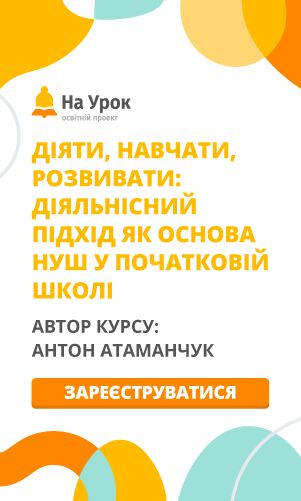План уроку 11 клас ( англійська мова) Тема « Наука і технічний прогрес. Видатні науковці та наукові премії» Тема : З чого складається особистість?
План уроку 11 клас ( англійська мова, поглиблене вивчення ) Тема « Наука і технічний прогрес. Видатні науковці та наукові премії»
Тема : З чого складається особистість?
Урок присвячений видатним науковцям, лауреатам Нобелевської премії.
План уроку 11 клас ( англійська мова, поглиблене вивчення ) Тема « Наука і технічний прогрес. Видатні науковці та наукові премії»
Тема : З чого складається особистість?
WHAT MAKES A PERSONALITY ?
Lesson Plan
Suggested Time Allowance: a pair of lessons (as we have in our school)
Objectives:
Students will:
1.Practice in listening and reading comprehension.
2. Enrich their active and passive vocabulary by learning new words and expressions.
3.Practice in speaking (prepared and unprepared speech) and writing English.
4.Learn about the history of the Nobel Prize and research some Nobel Prize recipients.
5.Research and discuss the meaning of “ personality”
Activities/ Procedures:
1.WARM-UP/ DO-NOW :
1. After greetings and announcing of the lesson’s theme ,students are split into small groups by means of simple counting like “tulip ,rose, poppy, daffodil, daisy” or “ red, green, yellow, black” ,etc. In their groups they are to brainstorm the possible ending of a sentence:” A personality is somebody who is….” Students are asked to think about certain characteristics of a personality. In 2-3 minutes each group produce their ending of the sentence.( If the teacher feels his students can be confused by the task, he can give his examples , before giving the task. E.g. Intelligent, good listener, educated, problem solver ,etc.) Then the students present their ideas which are written on the blackboard. When students have finished with their ideas ,the teacher points out that the list of characteristics they created is very diverse and varied ,that a personality needs to have many skills. The teacher pays special attention to the fact that everyone in the room has the ability to have these characteristics. Being a personality is attainable for everyone!
2. The students are asked to come to the front of the room and stand in a line. On their backs the teacher places the names of different famous leaders (persons) .These people can be either good or bad examples of leaders.
Sample list of leaders’ names:
Ghandi Gorbachev Bill Clinton
King Arthur Kuchma Churchill
Stalin Hitler Margaret Thatcher
Princess Diana Jesus Walt Disney
Chornovil Mother Teresa Roksolana
Lenin Grushevsky Shevchenko
Makarenko Mao Joan of Arc
The students must discover which famous leader (personality) they are by asking any questions they wish except “What is my name?” E.G. Am I a man or a woman?, What is my profession ?,
Am I alive or dead ? ,etc.
This activity can be made harder by allowing students to ask only yes or no questions. E.G. Am I a man?, Am I an athlete? Am I alive? ,etc.
Once students have correctly guessed their leader , they are to return to their groups and discuss why people on their back are known as famous leaders (personalities) The students should try to focus not on personal characteristics but what it was that each famous leader did to affect the world around him. Then the students are to present their ideas to the whole group.
The teacher summarizing the activity is to stress that no matter how different these leaders are, the one thing that makes them similar is that they all took action. No matter if what they did was horrible or brilliant they all did something to change the world around them. This is the factor that makes them leaders (personalities) we all know and remember.
3. Then the teacher ask in what way the mankind distinguishes its famous personalities. The desirable answer is – by giving different prizes and awards. Then the students are asked to name the most prestigious ones. For sure the Nobel Prize is to be mentioned .Then the students are proposed to listen to the information about the Nobel Prize. After listening they are to answer the following questions :
- What was Alfred Nobel?
- How large was his fortune?
- When was the prize established?
- Who nominates the nominees for the Nobel Prize? Should people be able to nominate themselves?
- Who made the final choice?
- In what areas are the Nobel Prizes awarded?
- What does a winner of the Nobel Prize receive?
- Are people of all nationalities eligible for awards?
The information offered below is directly quoted from Louisiana State University’s Web site titled “Historical Background of the Nobel Prize”
(http://www.lib.lsu.edu/sci/chem/guides/srs118_history.html)
Alfred Nobel, a Swedish chemist and the inventor of dynamite, left more than 9 million dollars of his fortune to found the Nobel prizes. Under his will, signed in 1895 , the income from this fund was to be distributed yearly in five equal parts as prizes to those who had most helped humankind. A prize was to be awarded in each of five fields: physics, chemistry, physiology (or medicine), literature, peace ,and (after 1968) economics.
The physics and chemistry awards were to be made by the Royal Swedish Academy of Sciences; physiology or medicine, by the Karolinska Institute of Stockholm; literature, by the Swedish Academy; and peace, by a committee of five chosen by the Norwegian parliament. A prize in economics was established in 1968. The Royal Swedish Academy of Sciences was designed to make the award.
Nominations of candidates are submitted to the prize-awarding institutions before February of each year. The nominations are made by individuals and institutions qualified according to regulations of the appropriate awarding body. In the fall of each year prior to granting the award, as many, as a thousand of these qualified persons may be invited to propose candidates. All nominations must be in by January 31 of each year. No person may apply directly. None of the deliberations by the awarding bodies are made public as a safe guard against outside pressure and controversy. A final choice is made by a jury of twelve who decide by majority vote. If a majority is not achieved for any one candidate the prize is not offered that year.
Beside the cash prize,each award consists of a gold medal and a diploma bearing a citation. The amount of each prize was more than 40,000 dollars in 1901; in 1991 it reached 1 million dollars. Often a prize is divided between two or more winners. In keeping with Nobel’s will, all nationalities are eligible for awards.
Because of big variety of textbooks used in different schools ( by Ukrainian authors, by Longman and by Oxford University Press ) the teacher is decide by himself which words are new for his students and are to be translated before reading the text and to be worked at specially.
4. Each group of students ( as they were split at the beginning of the lesson)is given an article with the information about a Nobel Prize winner.(see addition 1. You can search for more information at the Web site : http://www.nobelprizes.com). They are to read the articles and be able to answer the following questions:
- Why did this person win the Nobel Prize in this particular area?
- When did this person win?
- What was this person’s background (upbringing and work in this field) and how did it affect his or her work and interests?
- How has this person’s outstanding work influenced society?
- What other information about this person is noteworthy and relevant and should be included in a biography of him or her?
The students are to create a poster or PowerPoint board where they are allowed to write only names, dates , titles of the most important works of the Nobel Prize winner, etc. The posters are placed on the blackboard. But no oral presentations are made.
Then the students are to be combined into groups ,which form “a bunch” or “ a rainbow”( in each group all “colours” or “ flowers” are present) And in this group every “colour” is to tell the rest about the Nobel Prize winner he studied about in the first “ colour” group. Then the students return to their “colour “ groups and discuss there all the information they got in the “bunch” (or “rainbow”) groups. This activity is called “a jig-saw activity “ and is very effective because the information is gathered and delivered by the students themselves and is being repeated several times.
5.The students are asked to write a short biography of one of the Nobel Prize laureates they’ve read and heard about. The biography should include the answers to the questions they used as a plan when reading the biographies. The students may use posters ,but the names of the persons they will write about are to be given by the teacher.
6.WRAP-UP/HOMEWORK:
Summing up the teacher is to stress again that we are all personalities, because ,according to the encyclopedia “Britannica” :” personality is a characteristic way in which a particular individual thinks ,feels and behaves. Personality embraces a person’s mood, attitudes and opinions and is most clearly expressed in interactions”. But, speaking about famous personalities, their main feature was that they took actions and worked hard . The students are proposed to think over some thoughts by famous people on the topic:
Nobody makes a greater mistake than he who did nothing because he could only do a little.
Edmund Burke
Never doubt that a small group of thoughtful, committed people can change the world; indeed, it is the only thing that ever has.
Margaret Mead
I submit to you that if a man hasn’t discovered something he will die for , he isn’t fit to live.
Martin Luther King,Jr
If there is some time left the students can discuss the quotations in connection with the theme of the lesson –“What makes a personality?” . If there is no time left the students are asked to think the quotations over at home and, may be, use in their home compositions – “ What makes a personality?”
Evaluation: Students are evaluated based on written biographies of the Nobel Prize winners, participation in classroom discussion, and final home compositions “What makes a personality?”
References: “ Leading is Action” (A Teacher’s Guide to Leadership Education and Community Action ) by Stephanie Richard , the Peace Corps volunteer, 2000.
Lesson Plan “ The “Nobel” est of Awards,:( http://www.nytimes.com/learning)


про публікацію авторської розробки
Додати розробку
